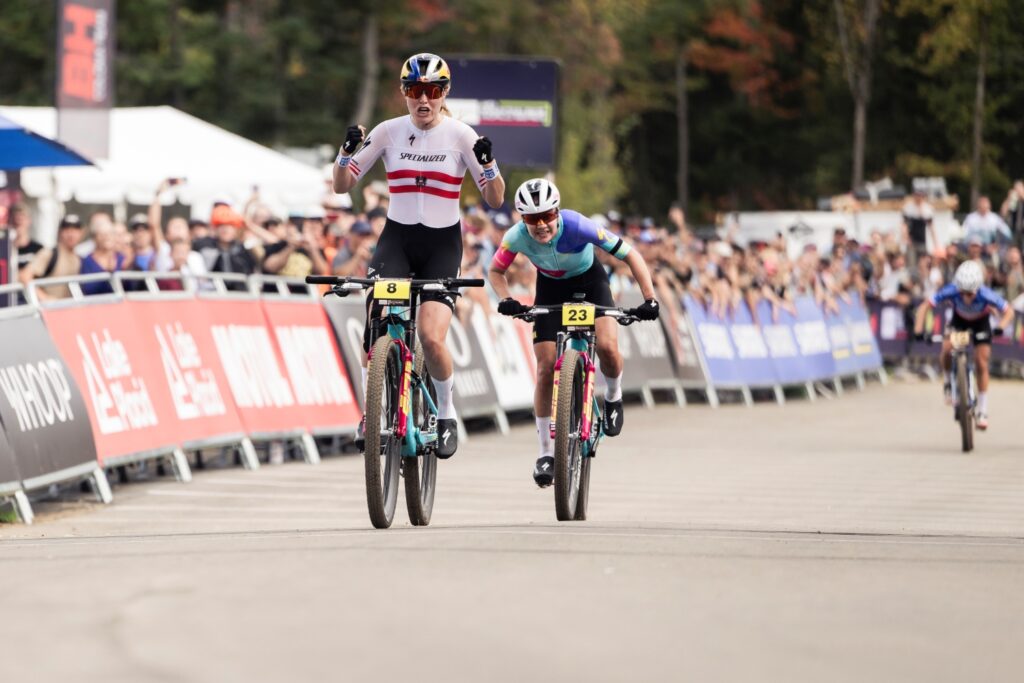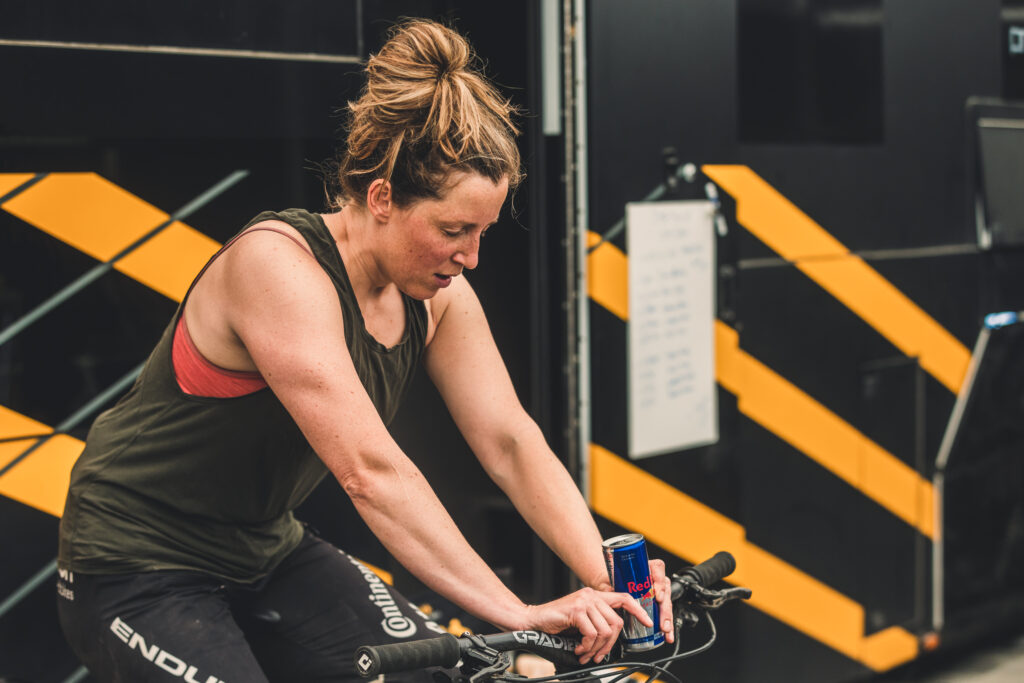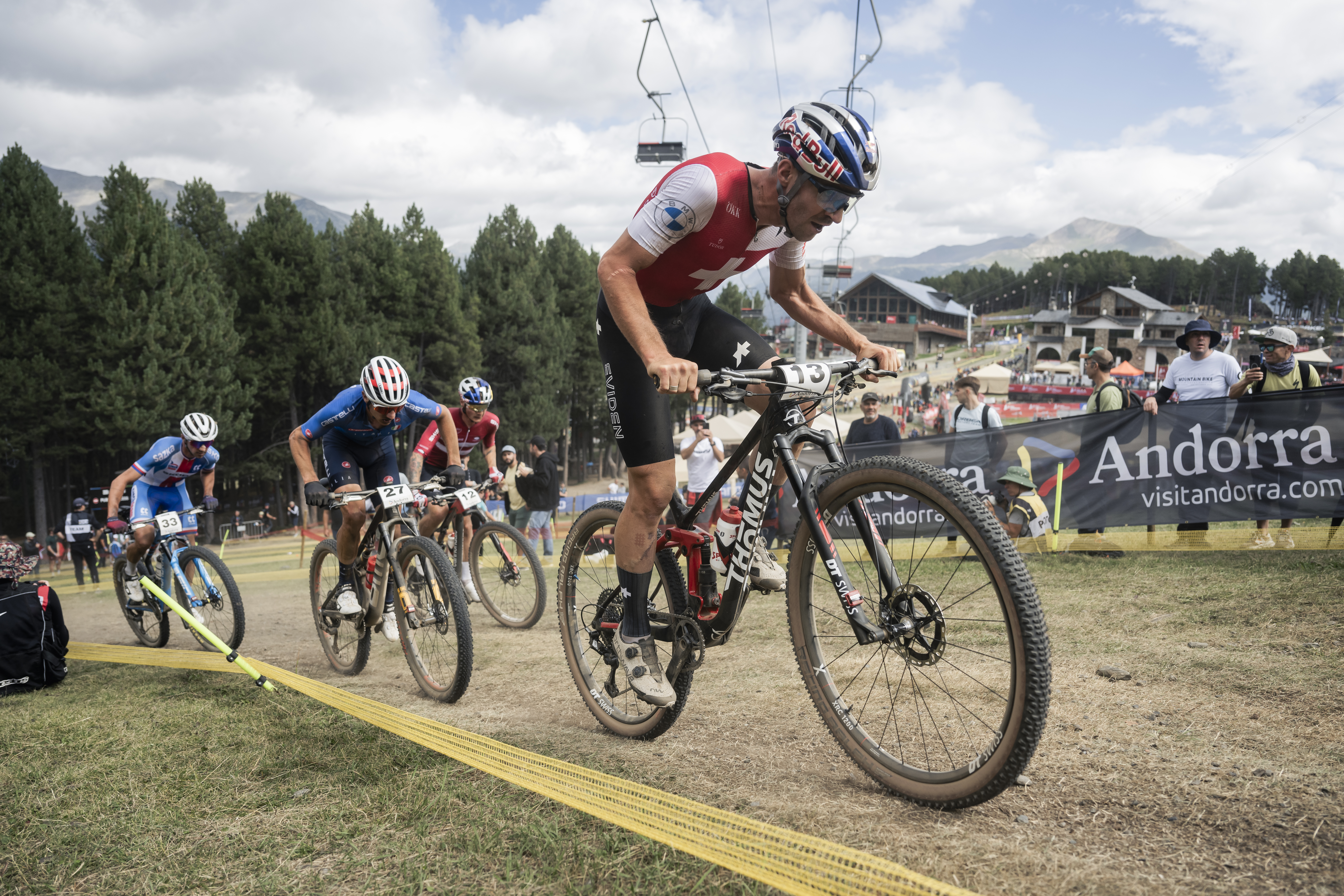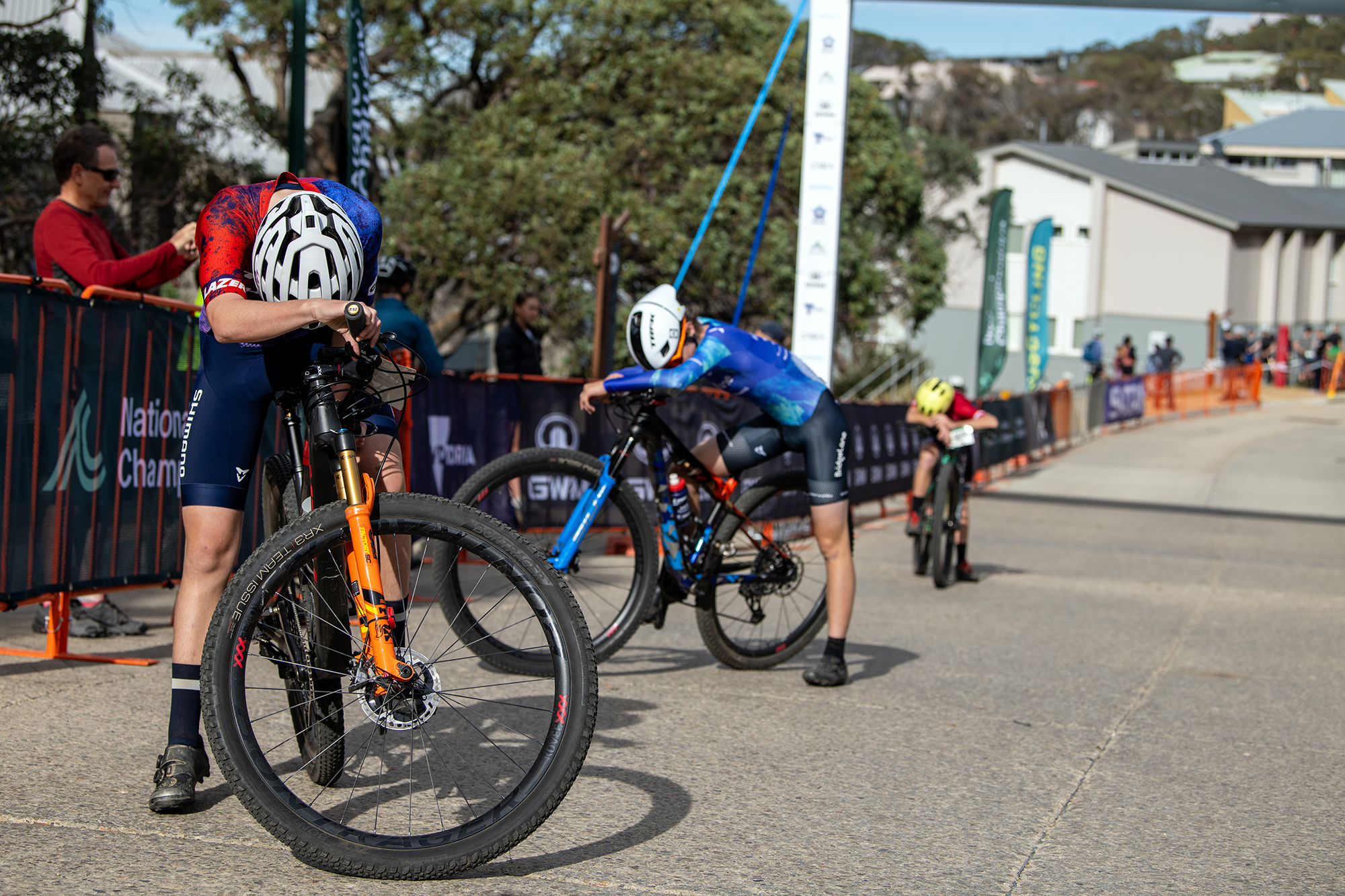Spend less than one minute doom scrolling through mountain bike athlete stories on Instagram, and you’re sure to find a European World Cup legend depicted with an exorcist face, or perhaps a freshly flogged Sam Fox lying in a ditch. These athletes will explain they’ve just eviscerated their lungs with the latest science-backed high intensity interval training (HIT) 40/20s or 5x5min VO2s. You may look at their pained faces and think “what is this HIT? Why are they doing it? What does science say about it? Is it worth the pain?”.
I’m here to take you down that HIT wormhole to find out the answers to these questions and more.
What is HIIT in cycling?
HIT has been used by athletes for over a century (Buchheit & Laursen, 2013) and is a term attributed to German coach Waldemer Gerschler who believed “alternating periods of hard work and recovery was an effective adaptive stimulus for the heart.” (Seiler & Tonneson, 2009) Hebisz (2016) defines interval training as “repetitions of maximal intensity exercise, usually performed for about 45seconds, interspaced with rest periods lasting from 30sec to 4min”.
Conversely, interval guru Stephen Seiler’s (2024) key workouts include a longer time period spent at a specific percentage of VO2 max to target in his definition of intervals. He describes his intervals as “repeated bouts of exercise lasting 1 to 8 minutes, eliciting an oxygen demand equal to 90 to 100 % of VO2 max, separated by rest periods of 1 to 5 min”.
So what’s the best way to go? Well, intervals consist of at least nine variables and each can be changed according to the aims of the session and event the athlete is targeting, meaning that the best interval depends on a range of variables. These variables include:
- Number of work intervals
- Intensity of each work interval
- Duration of each work interval
- Number of recovery intervals
- Intensity of the recovery interval
- Duration of the recovery interval
- Exercise type used to do the interval (eg run, ride, swim)
- Number of sets
- Recovery duration and intensity between sets (Buchheit & Laursen, 2013)
VO2 max and interval training explained
Unfortunately, HIT can sometimes be perceived as a ‘hero’ workout that, in isolation, will lead to huge gains in speed or power on the bike. It must be stressed that HIT can cause significant central and peripheral fatigue (McKee, 2024) so should be used in moderation during key parts of the season.

HIT should form only a small percentage of a much larger volume of overall training that includes large blocks of low intensity aerobic (or zone 2) training, threshold training (zone 4), skills training and strength training, as well as rest and recovery. This creates a combination of training intensities and durations that will accumulate over weeks, months, and years of training (Seiler, 2024).
Why High Intensity Interval Training Works for Cyclists
Consensus across recent training science literature identifies the main goal of HIT is to accumulate time training at 90–100% of VO2 max, abbreviated as T@V̇O2 max (Buchheit & Laursen, 2013, Ronnestad et al, 2015, McKee, 2024). This has been identified as the sweet spot to achieve physiological gains including: type 2 muscle fibre recruitment, increased stroke volume (amount of blood pumped out of the heart in a minute), delivery of oxygen to the muscles, capacity of the muscles to buffer lactate, all of which results in overall increases in power and pace on the bike.
Riders familiar with training at 90–100% of VO2 max will know it’s well above threshold power and is appropriately labelled by sports scientists as the ‘severe intensity domain’ and by coaches as zone 5 (Seiler, 2024, Coggan). It’s a pretty vomitus place to spend your training time. HIT intervals require extreme focus and motivation to sustain for any length of time, which usually ends up not being very long at all – it’s really very hard!
Using HIT intervals to perform these bouts of intensity and then including recovery intervals in between allows a rider to accumulate more total work time at 90–100% of VO2 max across a workout than they would accumulate if they were to attempt these severe intensity efforts continuously without any recovery intervals until they fail (McKee, 2024).
How Long Should Your HIIT Intervals Be for Maximum Gains?
HIT can be divided into longer work intervals (LI) of 3–5min at relatively high exercise intensity, or shorter work intervals (SI) of 15–45sec at even higher exercise intensity than used during the LI intervals. Different work to recovery ratios are used, with 2:1 and 1:1 work to rest ratios being the most common (Ronnestad et al, 2015).
Performing HIT with either short or long work intervals has been found to be effective for improving V̇O2 max and endurance cycling performance (McKee, 2024). Studies that have investigated the training effects of both SI and LI in endurance-trained participants report similar improvements with both HIT protocols (Ronnestad et al, 2015). Whether the intervals are long or short, the total training time above 90% VO2max is what really counts as a good criteria to judge the effectiveness of the interval to improve aerobic fitness.
Which HIIT Intervals Fit Your Fitness Level and Riding Style?
Beginner or less experienced riders will experience similar physiological gains to HIT just from riding their bikes most days (consistency) and gradually increasing the duration of their rides (progressive overload).

HIT is appropriate for moderately trained through to highly experienced or elite riders who have plenty of hours and volume already in their muscles, heart and lungs accumulated over years of riding.
What Type of HIIT Session Is Right for You?
- The discipline that you are training for (cross country, downhill or enduro)
- Your training history and period of the training cycle you are in (eg base, general preparation, specific preparation, competition phase)
- How stressful the HIT session will be in relation to other training that needs to be completed that week, remembering that consistency always trumps individual hero training sessions. If you destroy yourself doing HIT and take three days to recover before you ride again the session is too hard and should be reduced to enable quicker recovery and more consistency.
In our next article we discuss and unpack the specifics of differing types of HIT workouts, and how to best execute these sessions for maximal gains. In the meantime, ride your bike, build a big base and I’ll catch you in issue 213 with some juicy sessions to get you race ready in 2025. In the meantime, reach out if you have any questions on HIT.
References
Buchheit, M. & Laursen, P (2013)High-Intensity Interval Training, Solutions to the Programming Puzzle: Part I: Cardiopulmonary Emphasis. Sports Medicine Auckland
Hebisz (2016) Differences in Physiological Responses to Interval Training in Cyclists with and without Interval Training Experience. Journal of Human Kinetics. Volume 50. 93 – 101
McKee, J. (2024) Optimising high-intensity interval training prescription for aerobic adaptions in endurance athletes. Journal of Australian Strength & Conditioning.
Rønnestad, B. R. et al. (2013) Short intervals induce superior training adaptations compared with long intervals in cyclists – An effort-matched approach. Section for Sport Science, Lillehammer University College, Lillehammer, Norway.
Seiler, S. (2024) It’s about the long game, not epic workouts: unpacking HIIT for endurance athletes. Applied Physiology, Nutrition, and Metabolism.






